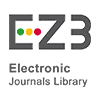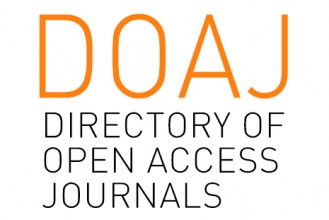A Comparative Study on Foreign Language Speaking Anxiety Level of Female Students in Only-Girl School and Mixed-Sex School in EFL Classroom.
Abstract
This non-experimental, causal-comparative study, sought to find possible variations in foreign language speaking anxiety level among female students in two different educational environments: the mixed-sex Bambassi Secondary School and the all-females Pharo Boarding School.The Foreign Language speaking Anxiety Scale (FLSAS), Developed by Horwitz et al. (1986), was used to assess foreign language speaking anxiety level of female students within the two environment. This research reveals that Pharo Boarding School and Bambassi Secondary School students (p = 0.607) do not differ noticeably in foreign language speaking anxiety. This points to little impact of variables related to school, like teaching techniques, the surroundings of the school, or the kind of institution, on the degree of worry experienced by pupils.
Keywords
Full Text:
PDFReferences
Abu-Rabia, S. (2004). Teachers’ role, learners’ gender differences, and FL anxiety among seventh-grade students studying English as a foreign language. Educational Psychology, 24(5), 711–721. https://doi.org/10.1080/0144341042000263006
Aida, Y. (1994). Examination of Horwitz, Horwitz, and Cope’s construct of foreign language anxiety: The case of students of Japanese. The Modern Language Journal, 78(2), 155–168. https://doi.org/10.2307/329005
Baker, D. (2006). Gendered experiences of learning science. International Journal of Science Education, 28(4), 491–498. https://doi.org/10.1080/09500690500404646
Bensoussan, M., & Zeidner, M. (1989). Anxiety effects in English reading comprehension. Educational Psychology, 9(1), 33–47. https://doi.org/10.1080/0144341890090104
Campbell, C. M. (1999). Language anxiety in men and women: Dealing with gender difference in the language classroom. In D. J. Young (Ed.), Affect in foreign language and second language learning: A practical guide to creating a low-anxiety classroom atmosphere (pp. 191–215). McGraw-Hill.
Cheng, Y.-S. (2002). Factors associated with foreign language writing anxiety. Foreign Language Annals, 35(6), 647–656. https://doi.org/10.1111/j.1944-9720.2002.tb01903.x
Elkhafaifi, H. (2005). Listening comprehension and anxiety in the Arabic language classroom. The Modern Language Journal, 89(2), 206–220. https://doi.org/10.1111/j.1540-4781.2005.00275.x
Gregersen, T., & Horwitz, E. K. (2002). Language learning and perfectionism: Anxious and non-anxious language learners’ reactions to their own oral performance. The Modern Language Journal, 86(4), 562–570. https://doi.org/10.1111/1540-4781.00161
Horwitz, E. K. (2001). Language anxiety and achievement. Annual Review of Applied Linguistics, 21, 112–126. https://doi.org/10.1017/S0267190501000071
Horwitz, E. K., Horwitz, M. B., & Cope, J. (1986). Foreign language classroom anxiety. The Modern Language Journal, 70(2), 125–132. https://doi.org/10.1111/j.1540-4781.1986.tb05256.x
Kondo, D. S., & Ying-Ling, Y. (2004). Strategies for coping with language anxiety: The case of students of English in Japan. ELT Journal, 58(3), 258–265. https://doi.org/10.1093/elt/58.3.258
Lynch, A. (2002). The relationship between second language reading comprehension and first language reading ability: Evidence from Spanish-speaking ESL students. Reading Psychology, 23(4), 283–306. https://doi.org/10.1080/02702710290181636
MacIntyre, P. D., & Gardner, R. C. (1991). Methods and results in the study of anxiety and language learning: A review of the literature. Language Learning, 41(1), 85–117. https://doi.org/10.1111/j.1467-1770.1991.tb00677.x
Na, Z. (2007). A study of high school students’ English learning anxiety. Asian EFL Journal, 9(3), 22–34.
Onwuegbuzie, A. J., Bailey, P., & Daley, C. E. (1999). Factors associated with foreign language anxiety. Applied Psycholinguistics, 20(2), 217–239. https://doi.org/10.1017/S0142716499002039
Pahlke, E., Bigler, R. S., & Martin, C. L. (2014). Can single-sex education boost the achievement of girls and boys? An American perspective. Sex Roles, 69(7–8), 393–400. https://doi.org/10.1007/s11199-014-0375-6
Pappamihiel, N. E. (2001). Moving from the ESL classroom into the mainstream: An investigation of English language anxiety in Mexican girls. Bilingual Research Journal, 25(1–2), 31–38. https://doi.org/10.1080/15235882.2001.10162783
Park, G.-P., & French, B. F. (2013). Gender differences in the foreign language classroom anxiety scale. System, 41(2), 462–471. https://doi.org/10.1016/j.system.2013.04.001
Piniel, K., & Zólyomi, D. (2022). Foreign language anxiety: Understanding its roots and remedies. Journal for the Psychology of Language Learning, 4(1), 41–61.
Sadker, D., & Zittleman, K. (2009). Still failing at fairness: How gender bias cheats girls and boys in school and what we can do about it. Scribner.
Shi, Y., & Liu, Z. (2006). Foreign language reading anxiety in a Chinese as a foreign language context. The Modern Language Journal, 90(2), 274–286. https://doi.org/10.1111/j.1540-4781.2006.00495.x
Simpkins, S. D., Davis-Kean, P. E., & Eccles, J. S. (2006). Math and science motivation: A longitudinal examination of the links between choices and beliefs. Developmental Psychology, 42(1), 70–83. https://doi.org/10.1037/0012-1649.42.1.70
Steele, C. M. (1997). A threat in the air: How stereotypes shape intellectual identity and performance. American Psychologist, 52(6), 613–629. https://doi.org/10.1037/0003-066X.52.6.613
Wilson, J. T. S. (2006). Anxiety in learning English as a foreign language: Its associations with student variables, with overall proficiency, and with performance on an oral test. Unpublished doctoral dissertation. Universidad de Granada, Spain.
Woodrow, L. (2006). Anxiety and speaking English as a second language. RELC Journal, 37(3), 308–328. https://doi.org/10.1177/0033688206071315
DOI: http://dx.doi.org/10.18415/ijmmu.v12i11.7150
Refbacks
- There are currently no refbacks.
Copyright (c) 2025 International Journal of Multicultural and Multireligious Understanding

This work is licensed under a Creative Commons Attribution-NonCommercial-NoDerivatives 4.0 International License.
https://ijmmu.com
editor@ijmmu.com
facebook.com/ijmmu
Copyright © 2014-2018 IJMMU. All rights reserved.



































